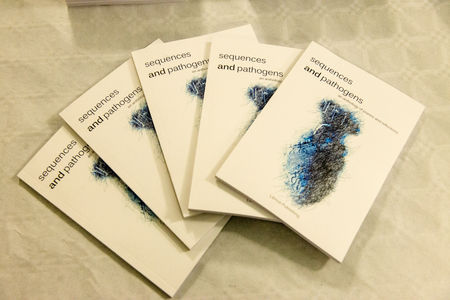
Poetry Meets Biomedical Science
Poetry Meets Biomedical Science was the first Litmus venture, interdisciplinary collaborative project with ten poets and ten biomedical science professors.
Following collaborative meetings between the poets and the scientists, I produced an anthology of creative and reflective writings titled sequences and pathogens with poetic contributions and reflections from the participants. The launch event took place at Keats House (see the photo gallery below).
The example below is from a professor who collaborated with the poet, Jacob Sam-La Rose:
“Talk about Jacob’s family made me more acutely aware than ever of the raw immediacy of the problems of ageing. We can see a way forward from the science, and this inspired Jacob. But we must move faster, crack it. His poem is on the laboratory wall, urging us on to ask the flies to give up their secrets.” Professor Linda Partridge, Institute of Healthy Aging, UCL.
The project dispelled the prejudice that poetry gets nothing done, and answered the question: what can artists offer science/scientists? The poets in this project acted as social scientists, stepping outside of their role and becoming marginal authorities, reordering our preconceived ideas of the function of the role. The project demonstrated the capacity of art to bring new ways of seeing, new models of cognition, and new methods of articulating scientific concepts. Some of the contributor’s noted the experimental methods of writing were more similar to scientific experimentation than anticipated; the process involved trial and error, creativity within paradigms. Click on the button below to read the poem "Chromosome7: An Elegy" by Simon Smith, who collaborated with Professor of Cancer Biochemistry, Catrin Pritchard.
At the time of curating this project, I was wanting to understand more about how information worked in poetry, the processes operating when the technical resonances clashed with the poetic sensibilities. I was interested in the productive tensions and fluencies of assimilating biomedical language and the plurality of definitions that follow any assimilation of a new lexicon into poetic practice; the organic, active echo of another discipline, fragmented from whichever source it departed.
This was the first of many Litmus projects, which you can read more about over here.
Project Gallery


















